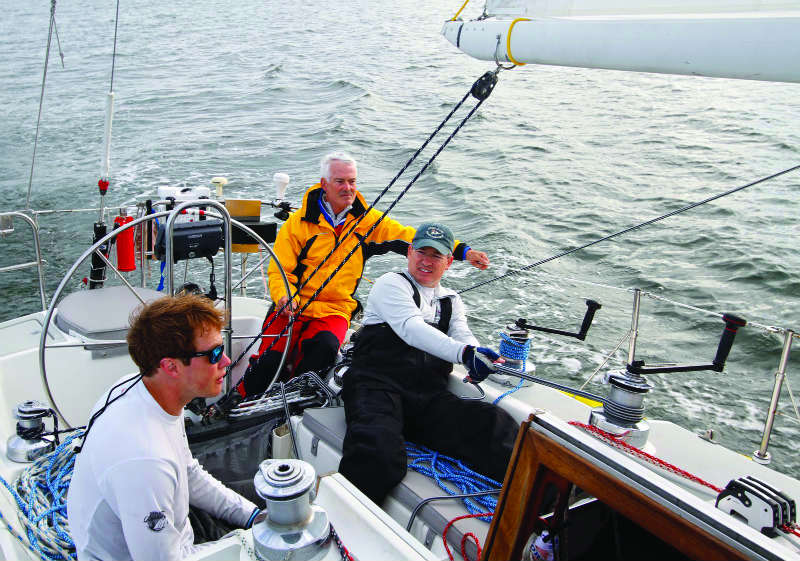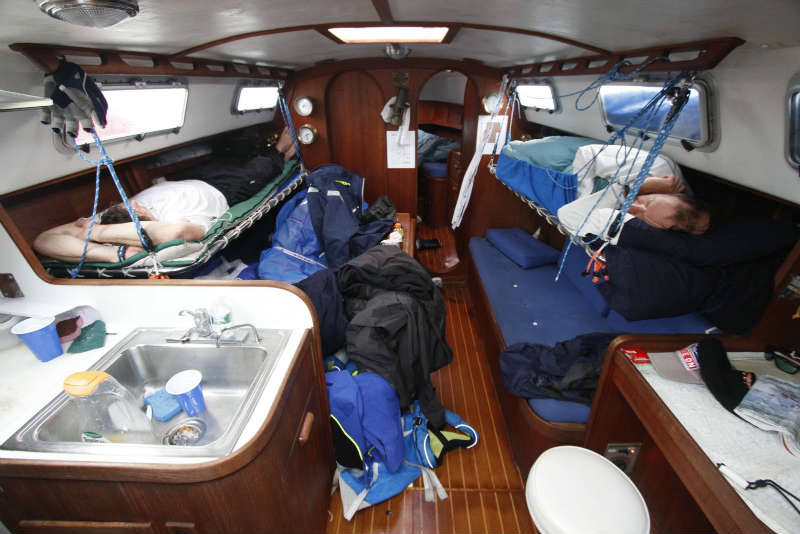Gearing up for offshore sailing
An essential part of crew preparation is making sure everyone has the proper gear. A comfortable crew is a happy crew, so we checked in with a couple of seasoned ocean sailors for tips on clothing, outerwear, and other personal items. But before we jump into the specific pieces our experts recommend, let’s take a moment to think big picture. Whether you’re racing or cruising, you’ll to want to be comfortable, and part of feeling comfortable is having realistic expectations.

Although the clothes you wear for racing and cruising are actually pretty similar, your expectations for life aboard should be different. Dan Lawrence, who’s been on the water for more than 50 years, explains, “For racing, expect to be in a crowded environment. Hotbunking is the norm, and although personal hygiene is demanded, time, space, and other factors will impact your ability to achieve that. Space and weight are at a premium. You will get wet. It’s simply a consequence of going as fast as possible in whatever weather you encounter, being overpowered some of the time, and taking spray or worse. It gets crowded down below, with very little to no ventilation. It will get foul smelling (though you’ll get used to it) and humid. At that point, wearing something that can dry on you topside will be pretty important.

“Cruising is a much more ‘civilized’ way of getting from point A to point B,” says Lawrence. “When you’re cruising, time may or may not be an issue. You may get wet, but not necessarily, since you have the ability to bear off, or slow down, or take a weather haven as needed. It’s generally not crowded onboard, and personal space is usually available. You likely will have a dedicated bunk and can stow your gear appropriately.” He continues, “A basic must-have list of personal things to bring aboard would include a PFD and tether, foulies, several pairs of gloves, at least two pairs of lightweight boat shoes or one pair of boat shoes and one pair of boots, PLRB or AIS man overboard equipment, flashlights, individual medication as required, a good pair of polarized sunglasses, hats, and sunscreen. I also carry a microfiber field towel, a balaclava, and cold weather socks.
"For flashlights I prefer a signaling flashlight (700 lumens or greater) and a headlamp. The ones I have chosen also have a red-light mode, so I can check sails at night. I also carry earplugs, which help block noise if I’m sleeping just a bulkhead away from engine batteries that are being recharged. And as odd as it sounds, I take a set of swim goggles with me. When you’re at the helm in a heavy downpour they help to eliminate the sting of rain or salt spray. Those items all go into my ‘must have’ bag. I don’t think any skipper or campaign manager could have fault with a bag like that. If I have only one bag, I will stick a minimum set of clothes in there. Otherwise I will have two bags.
"The second bag usually contains ‘nice to have’ items. What goes in there will depend on where I’m going, but the common theme is the type of fabric. It’s almost always something lightweight, that can layer easily, and dries quickly. For racing, it’s almost exclusively things like Patagonia, or items I pick up at REI. Under layers, mid layers, and outer layers. I want pieces that are comfortable to wear for long periods, retain heat for the body and wick water away, and dry quickly whether I’m wearing them or they’re hanging up down below.
"For cruising, ventilation isn’t usually a problem, and foul-smelling things below deck are strongly discouraged, which opens the aperture on what you can or cannot bring. I still take lightweight items that will keep sun off me, keep me warm or cold as required, and can dry easily. Wicking shirts without an under layer will keep you cool when it’s hot outside, and I usually get long-sleeved, light-colored shorts with an SPF of 50 to 70 built in. They can also be rinsed out easily and will be dry by the next watch when hung in your cabin.”
Lawrence concludes, “One more thing I usually do, and find really nice when I arrive at my destination, is take a few vacuum-seal bags, each with a complete set of clothes. When you arrive at your destination only to find your bag and all its contents soaked because a wet sail was dumped on it during a sail change, it’s nice to pull out a vacuum bag and go take a shower. You’ll feel so much better clean and dry. It changes your entire outlook on the task in front of you, which is, of course, to clean up the boat.”
~by Beth Crabtree




